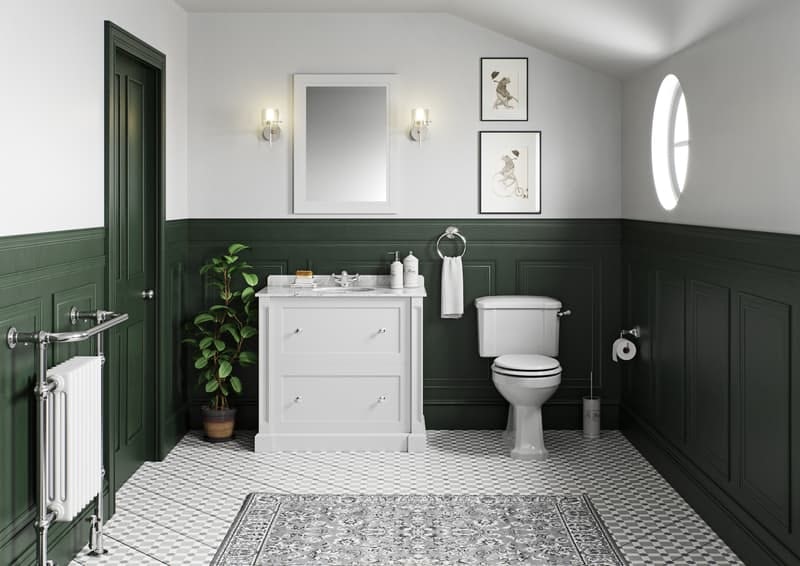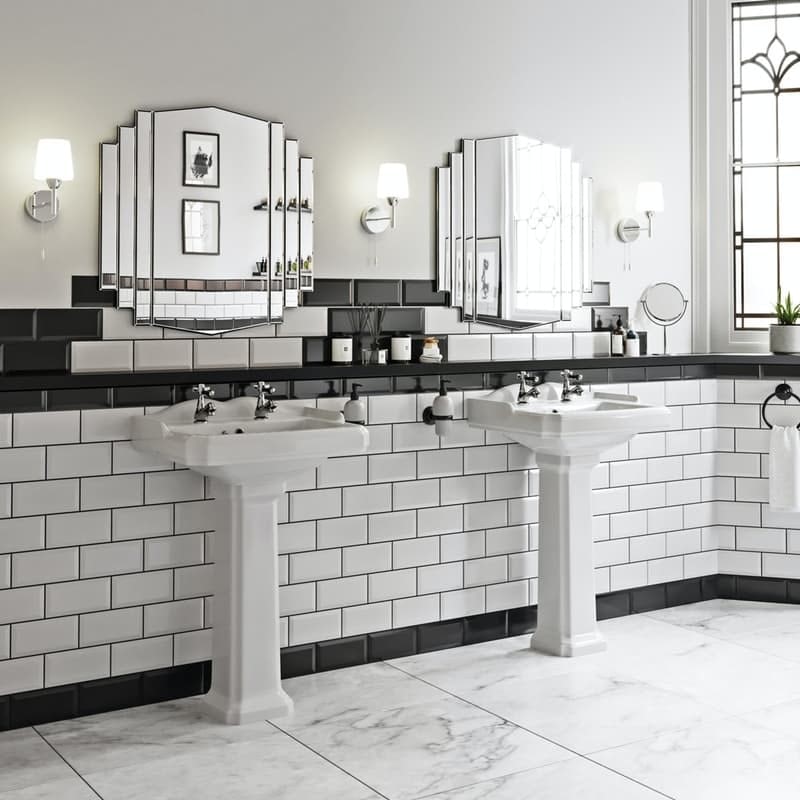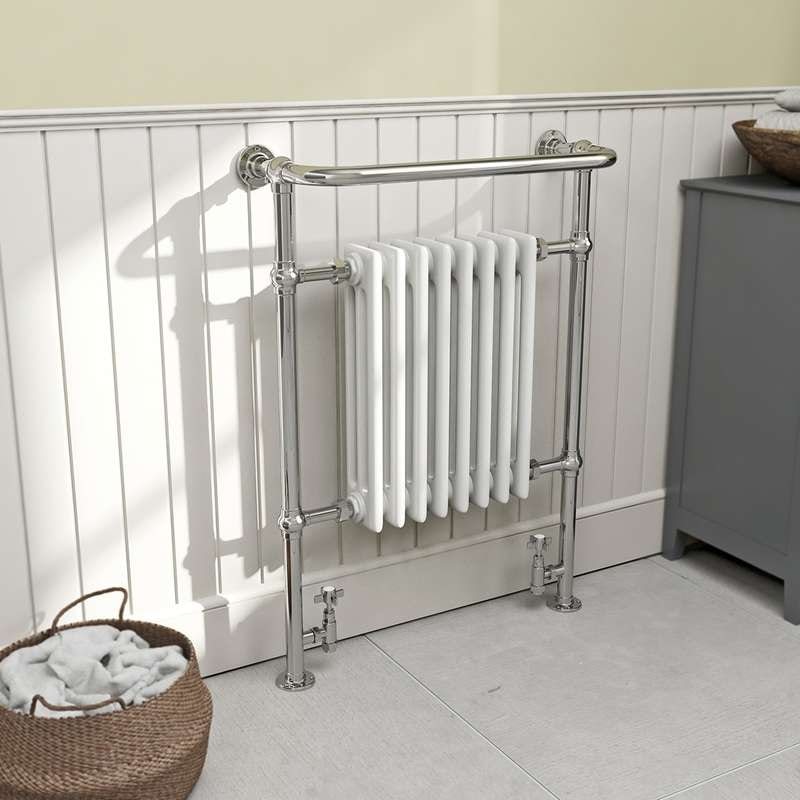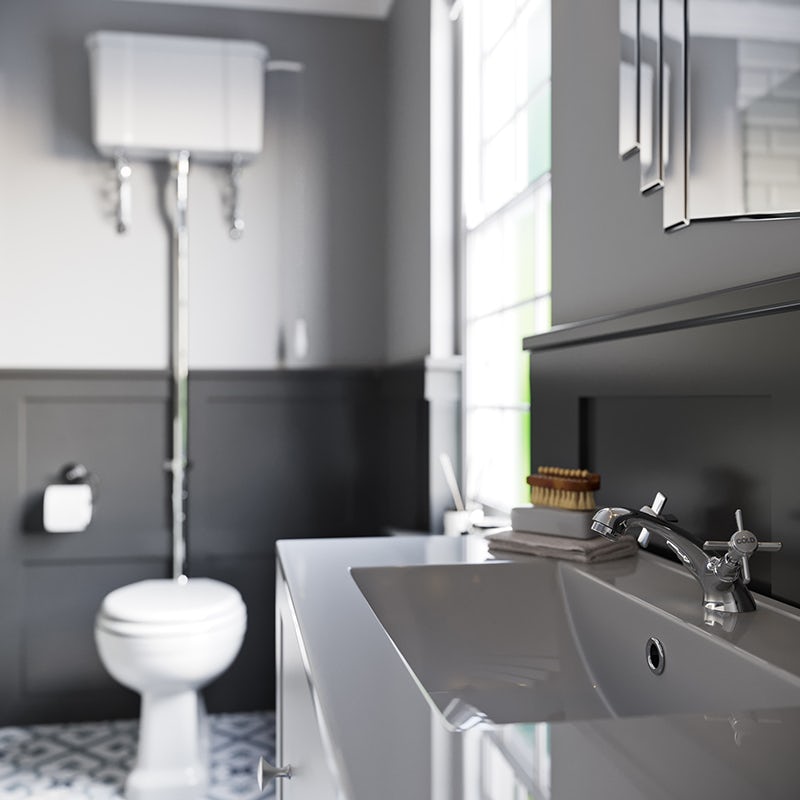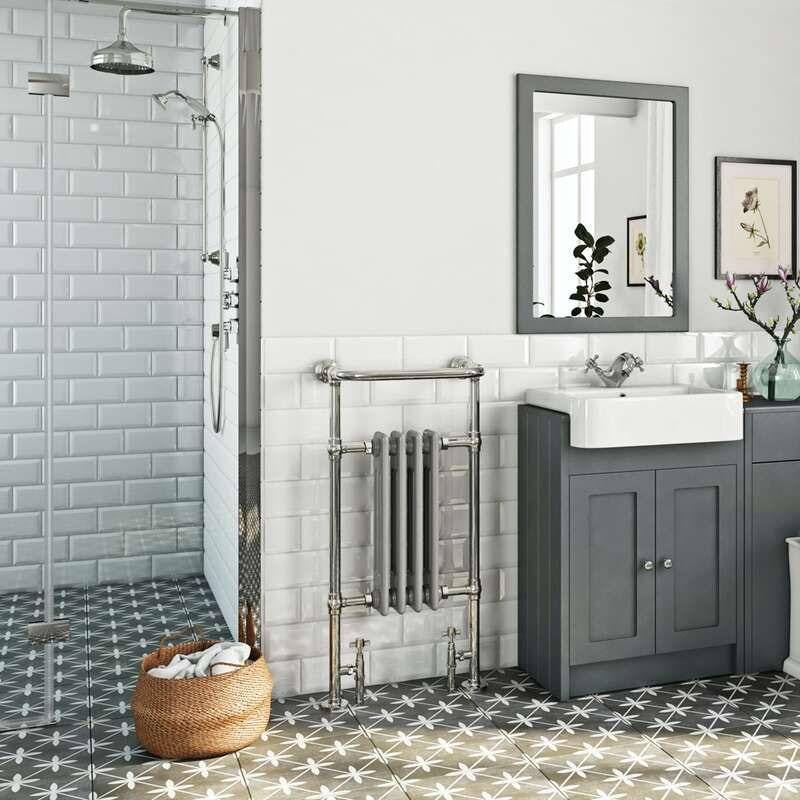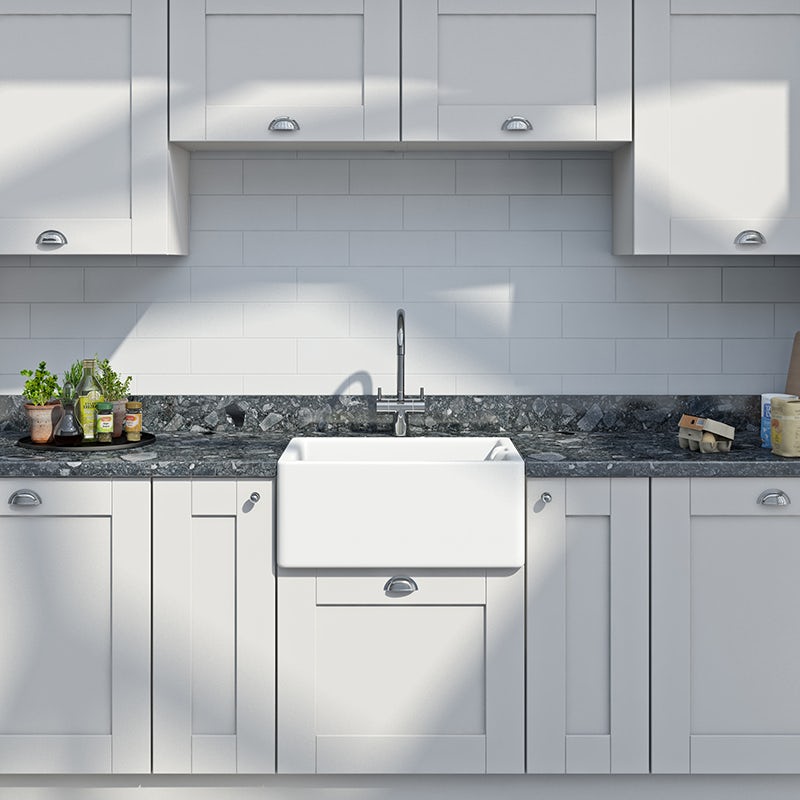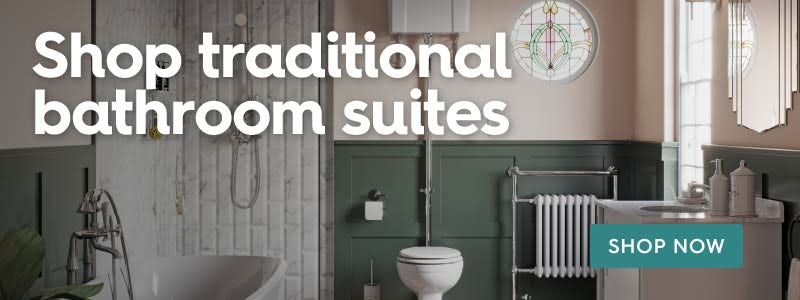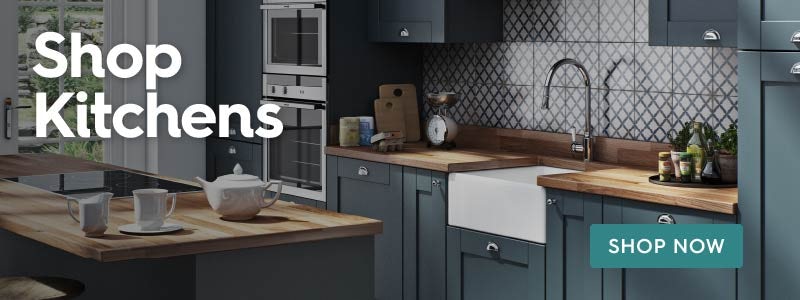If you’re lucky enough to live in an Edwardian home, or are thinking of moving into one, we’ll show you how to refurbish and redecorate in a sympathetic yet stylish manner.
As part of our series of home improvement guides, we take an in-depth look at Edwardian homes. Moving on from Victorian homes, it is estimated that these beautiful period properties make up around 8% of all UK housing stock. So, it’s likely that you may have, at least once in your life, lived in an Edwardian home. And, as with any older property, redecorating and dealing with legacy issues, such as reconfiguring your Edwardian plumbing system for a bathroom or kitchen, may be problematic. But help is at hand…
In this guide, I’ll tell you all about Edwardian housing, including what to expect in terms of original features and offer my own, expert advice on how to redecorate in-keeping with the period style.
Edwardian homes were some of the first to be designed with purpose-built bathrooms, complete with toilet and wash facilities
What is an Edwardian home?
As the name might suggest, an Edwardian home is one that was constructed during the reign of King Edward VII (1901 to 1910). Unlike the Victorian period, which lasted a majestic 64 years, the Edwardian era can seem incredibly short in comparison!
With World War I starting in 1914, many include the years leading up to this pivotal period in history, which had a profound effect on not just on the UK, but the world as a whole. This then led into the inter-war years—a long period of political, social and economic instability, which came to an end in 1945.
The Edwardian period is, however, notable for the high volume of house building that took place. The British Empire had arguably reached its zenith at this point, and Britain was the workshop of the world, with a highly mechanised, highly organised workforce, manufacturing and exporting everything from cotton to coal. And, with a growing and prosperous population, the demand for new housing, especially in urban areas, was high.
King Edward VII himself was the fashion influencer of his day, setting the tone for the general tastes in fashion and art. It was also a period of social change, where workers achieved more rights and women become more involved in politics, actively fighting for the right to vote and the right of equality. It was a time of relative peace and prosperity, and this was reflected in the types of homes that were built.
What are the features of an Edwardian home?
As with modern properties, there is no single type of Edwardian home, as housing was built to cater for all social classes, from manual labourers right up to the nobility of the day. The middle classes were, by now, firmly established, and much of the new housing was built with this burgeoning section of society in mind. Despite this, there are certain characteristics which many Edwardian properties have in common.
First off, after the mass migration to towns and cities during the Georgian and Victorian periods, the coming of the railways and public transport like trams allowed urban workers to look for leafier, brighter, larger homes on the edge of town. Sometimes swallowing up previously separate villages, these soon became the suburbs which we know today. Many leafy garden suburbs were specially-planned and it was now desirable for a home to have a front garden and be set back off the street.
Secondly, if the Victorian period had been all about mass production, the Edwardian period was heavily influenced by the arts and crafts movement. Simple designs and an appreciation of handcrafted elements, were the order of the day. Out went the Gothic designs popular in the 19th century and in came a more modern approach—something we would recognise in our own homes today. Despite this, some of the throwback and nostalgia of Victorian times remained, especially with the fashion for mock Tudor design, with exposed timbers.
There are many tell-tale signs that you are looking at an Edwardian home, which may include:
- Decorative elements at the front of the building
- Straight rows of terraced, semi-detached or detached housing
- Broader, lighter rooms and welcoming hallways and entrances (Victorian rooms could be quite narrow and oppressive)
- Simple interior furnishings—not overly ornate
- Parquet and wooden flooring
- Large multi-panelled sash windows—with more panels at the top and fewer at the bottom (look for a “6 panes over 2” design)
- Wood-framed porches—instead of stone—and red brickwork
- Front doors featuring glass panels
- Decorative chimneys built into the slope of a steeply-pitched roof
Edwardian lighting
Whilst electric lighting had been invented during the reign of Queen Victoria, by the start of the Edwardian period it was still very much in its infancy. Many new homes were lit by a combination of gas and candles, and would remain so until at least the 1920s. In fact, electric lighting was a quite the novelty during the Edwardian era and, those lucky or rich enough to afford it, would often draw as much attention to it as possible—the large bulbs were a real status symbol.
Classic lighting like chandeliers and decorative wall lamps are great choices when it comes to redecorating your Edwardian home. With light and space key characteristics, chandeliers will provide that sense of grandeur, especially in those properties with high ceilings.
Wall lights are a great choice for Edwardian homes
Edwardian heating systems
By the late Victorian period, homeowners had really started to warm to the idea of radiators as a way of heating the home. And in 1900, when the National Radiator Company opened a factory in Hull, the mass manufacturing of radiators had begun.
Thanks to this new technology, most domestic properties built during the Edwardian period were fitted with a central heating system—a major attraction for new home buyers in those early years of the 20th century. Whilst it may have been a little rudimentary, when compared to the modern gadgetry of today, radiators would have been a familiar sight for many of us. Indeed, if you live in an Edwardian home, it’s likely that your current radiators will be in the exact same position as those originals from over a century ago.
Edwardian radiators were typically ornate and decorative in design—a look which eventually fell out of fashion. And, whilst the materials and general appearance may have changed, many contemporary homeowners are now harking back to those period designs when refurbishing their homes, enjoying just a taste of this turn of the century style.
If you’re looking for something more sympathetic to your home, why not check out our favourite Edwardian radiators?
Edwardian living spaces
When it comes to living spaces, Edwardian homes tend to have large, airy lounges with high ceilings and large sash windows, offering a clean, light and modern place in which to relax. And if you feel like you’re sensing a theme here, you’re absolutely right. Everything about the Edwardian home was lighter, brighter and more spacious than what had gone before.
The Art Nouveau movement in particular had a massive influence on home décor during the Edwardian. This look, which gained popularity throughout Europe, was influenced by natural forms, like plants and flowers, providing a dynamic and exciting feel. It had a particular impact on all aspects of home furnishing, particularly items like chairs, sofas, dining tables and lamps. Even fireplaces were designed with very modern surrounds.
Tiled flooring, which had been popular in Victorian homes (especially in hallways), gave way to other materials during the Edwardian era, particularly wooden parquet flooring. Whilst this type of floor covering fell out of fashion a little, mainly due to the mass availability of carpets, it is a look that has gained prominence in recent times. If genuine hardwood flooring is too expensive or difficult to maintain, there are plenty of affordable, easy-to-fit vinyl or laminate flooring options available that replicate this style.
The Edwardian bathroom
Edwardian homes were perhaps the first to be routinely designed with dedicated space for a functioning indoor toilet and full washing facilities.
In the new leafy suburbs, housing estates were built with direct access to the sewer systems and water mains, meaning outhouse toilets or privvies were set to be consigned to history. Saying that, the toilet and bathroom weren’t always found in the same space, with many homes possessing 2 distinct spaces—a small water closet for the toilet and separate room for a bath and washing facilities. However, the main bathroom was, much like the rest of the home, designed to be large and spacious, using light to great advantage.
So, how would an Edwardian bathroom have looked? The bath would have been the centrepiece of any Edwardian bathroom and these were still generally quite ornate in style, with ball and claw feet raising the tub itself off the floor and a roll top edge allowing for comfort when getting in and out of the bath. It wouldn’t be until the 1920s that straight baths like those commonly found in contemporary homes, would be available to the general public.
Thanks to the Art Nouveau movement, the Edwardian bathroom would be a cheerful and welcoming place, with a floral or organic wallpaper and a lively colour palette. Pastels (which are back as a big trend today) like blush pinks and baby blues were popular, along with yellows, greens and even grey!
The toilet, which as previously mentioned could have been found in a separate water closet, was usually a high level cistern design with a chain pull flush and wooden seat.
A high level cistern toilet is a great way to add period style to your Edwardian bathroom
If you’re looking to redecorate your Edwardian bathroom in a sympathetic style, you should have a lovely roomy space to work with. Picking out traditional roll top baths, classically-styled suites and furniture is all well and good but it pays to carefully consider your colour palette, lighting and choice of accessories. Pick out lighter shades and use these alongside white or light grey tiles and flooring. Large, possibly even illuminated mirrors will make your space feel even bigger, whilst wall lights could also be used to get the mood just right. Accessorise with cross head or lever handle taps for that authentic look.
If you want to go for more modern conveniences, like a shower, there are plenty of designs that include traditional touches, complementing an Edwardian bathroom to perfection. For heating, you’ll find plenty of traditional radiators and even heated towel rails with classic columns, to keep things warm and welcoming. Don’t add too many accessories though…clutter will only detract from that feeling of light and space.
Seek out traditional column radiators and heated towel rails for your Edwardian home
Edwardian kitchen spaces
Whilst Victorian kitchens could be dark and dingy, Edwardian kitchens were markedly different, being (yes, you’ve guessed it) lighter, brighter and more spacious. The ornate designs and darker colours were ditched in favour of cheerful pastel colours and pristine white tiles.
Of course, one of the major changes that many new Edwardian homeowners could enjoy was the introduction of electricity, with new-fangled appliances such as fridges and ovens evolving the kitchen into the modern space we recognise today. Another big change was the supply of fresh water, piped straight into the home meaning that washing and rinsing were now easier than ever. This meant kitchen sinks were in high demand, leading to various different styles and materials being used. Edwardian plumbing systems were connected to modern sewers, meaning living conditions were now far more hygienic.
Shopping habits also had a major impact on the design of the Edwardian kitchen. As groceries became more readily available, including tinned goods, more storage space was required. This led to the introduction of cabinets, so that ingredients and cooking utensils were readily accessible—paving the way for the modern fitted kitchens we know today, where storage is key.
Keep things light and bright with traditional style units in a white finish
If you’re looking to recreate the turn of the century splendour of an Edwardian kitchen, keep an eye out for traditional style fitted furniture with classic handles. Light coloured worktops will maintain that bright, spacious feel, whilst pastel colours and floral wallpaper can be used to add some of that Edwardian flavour into the mix.
Edwardian bedrooms
Whilst Victorian bedrooms were generally less grandiose than those of their Georgian ancestors, the Edwardian bedroom began to see experimentation with style and design. Much like the rest of the home, colour palettes became lighter and brighter (there’s those words again!) as gas lighting and even rare electrical lights (which I mentioned earlier) replaced candles.
Floral patterns, both on wallpaper and bedspreads came into fashion, replacing the more complicated designs of the Victorian period. By now, items like carpets and wall coverings were available to the masses and your well-to-do Edwardian had quite a choice.
Another key development in brightening up the Edwardian home was the invention of gloss paint. This allowed for more light reflection and, as large mirrors became more affordable, the average new homeowner could enjoy a very different bedroom experience, when compared to their Victorian predecessors.
Beds were now available in a wealth of designs, with fresh, modern styles complementing the rest of the room. With an indoor toilet and bathroom now in easy reach of most homeowners, the washstand and chamber pot could finally be consigned to the rubbish tip—although washstands are now back in vogue for traditional style bathrooms.
Like this article?
We hope you enjoyed finding out more about Edwardian homes and picked up some valuable tips on redecorating in a sympathetic manner. If you’d like to read more articles like this, why not follow us on social media by clicking on the buttons at the bottom of this page.
If you haven’t done so already, why not read our guide to Victorian homes? We’ll be adding more improvement guides for period homes to our inspiration section later in the year, so please do check back with us soon.
Shop traditional bathrooms & kitchens
Discover our comprehensive and stylish range of traditional bathrooms and kitchens, available at Victoria Plum. Whatever period property you live in, you’ll find the perfect bathroom suite, furniture or fitted kitchen for your needs. Click the images below to start browsing.

